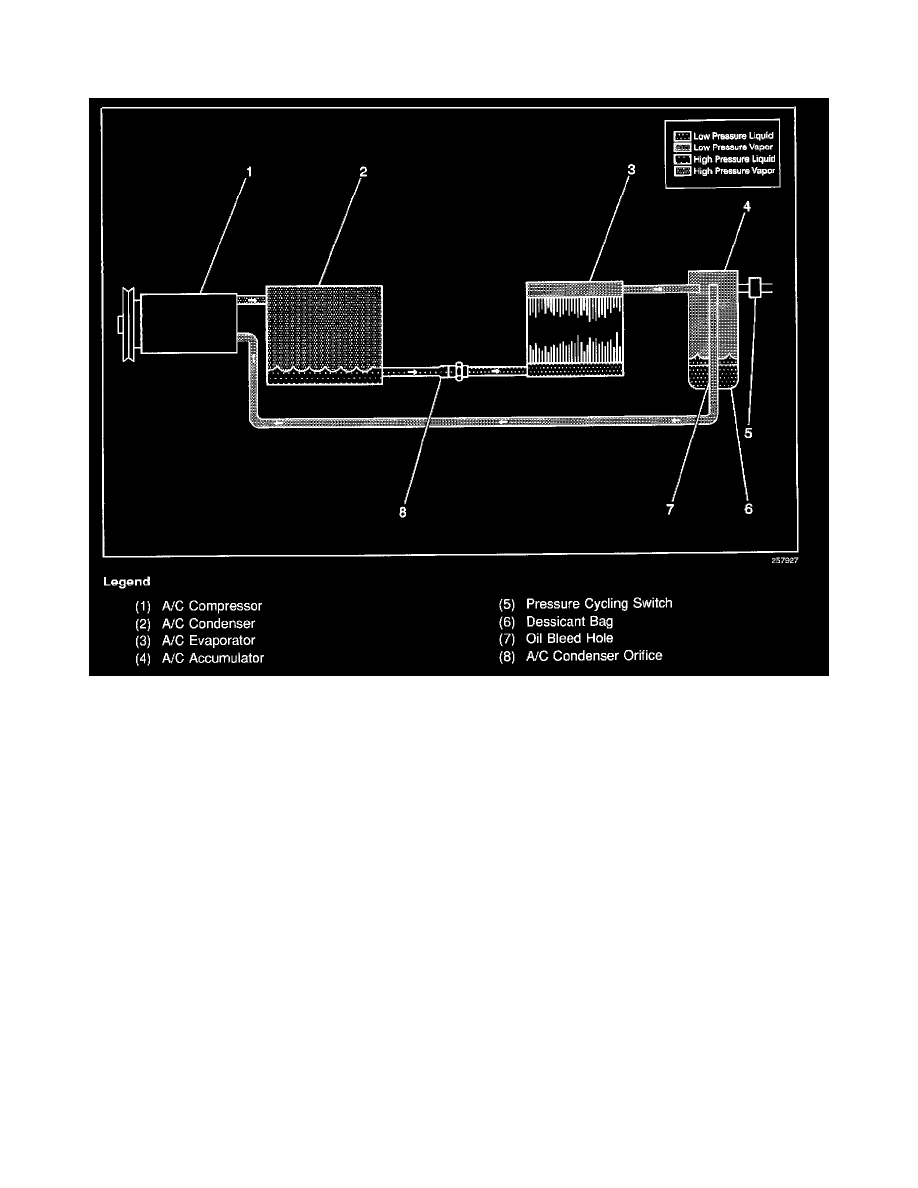K Yukon/Denali 4WD V8-5.7L VIN R (2000)

Control Assembly: Description and Operation
A/C System
System Components
The Cycling Clutch Orifice Tube (CCOT) refrigerant system cycles a compressor (1) on and off in order to maintain the desired cooling. This cycling
also prevents evaporator freeze-up. The temperature selector on the control assembly maintains comfort in the passenger compartment comfort.
A switch that senses low side pressure as an indicator of the evaporator pressure controls the refrigeration cycle, or the on and off operation of the
compressor. The cycling pressure switch is the freeze protection device in the system. The switch also senses refrigerant pressure on the suction side of
the system. This switch is located on a standard service low-side fitting. With air temperatures of 16°C-26°C (60°F-800°F), the increased pressures
within the charged air conditioning system closes the contacts of the pressure switch.
When an air conditioning mode is selected, the compressor clutch coil receives electrical energy. As the compressor reduces the evaporator pressure to
approximately 175 kPa (25 psi), the pressure switch opens, de-energizing the compressor clutch. The system moves towards equalization and the
pressure reaches approximately 315 kPa (46 psi). Then, the pressure switch contacts close, telling the PCM to recognize the clutch relay. The cycling
continues and maintains the evaporator surface temperature at approximately 7°C (45°F) depending on ambient and relative humidity. Higher ambient
temperature and higher humidity equal higher discharge temperature.
Some slight increases and decreases of engine speed/power may occur under certain conditions, due to the cycling. This is normal. The system cycles in
order to maintain maximum cooling, without evaporator freeze-up.
Additional compressor protection results from the operating characteristics of the low-side cycling pressure system. If a massive discharge occurs in the
low side of the system, or the orifice tube becomes plugged, the contacts of the pressure switch may not close due to insufficient low-side pressures. If
there is a low charge, insufficient cooling accompanied by rapid compressor clutch cycling is noticeable at high air temperatures.
When the engine is OFF while the air conditioning system is operating, the refrigerant in the system flows from the high-pressure side of the expansion
tube (orifice) to the low pressure side until the pressure moves towards equalization. This may be detected as a hissing sound for 30-60 seconds. The
hissing is normal.
